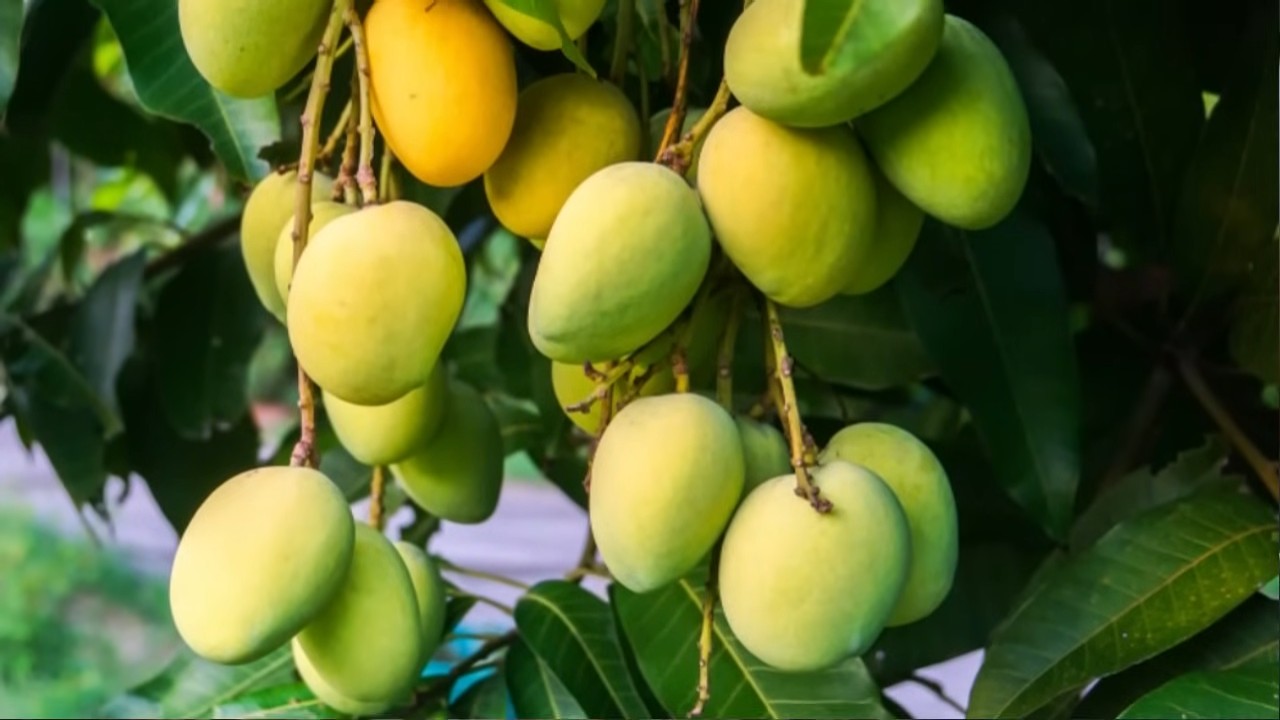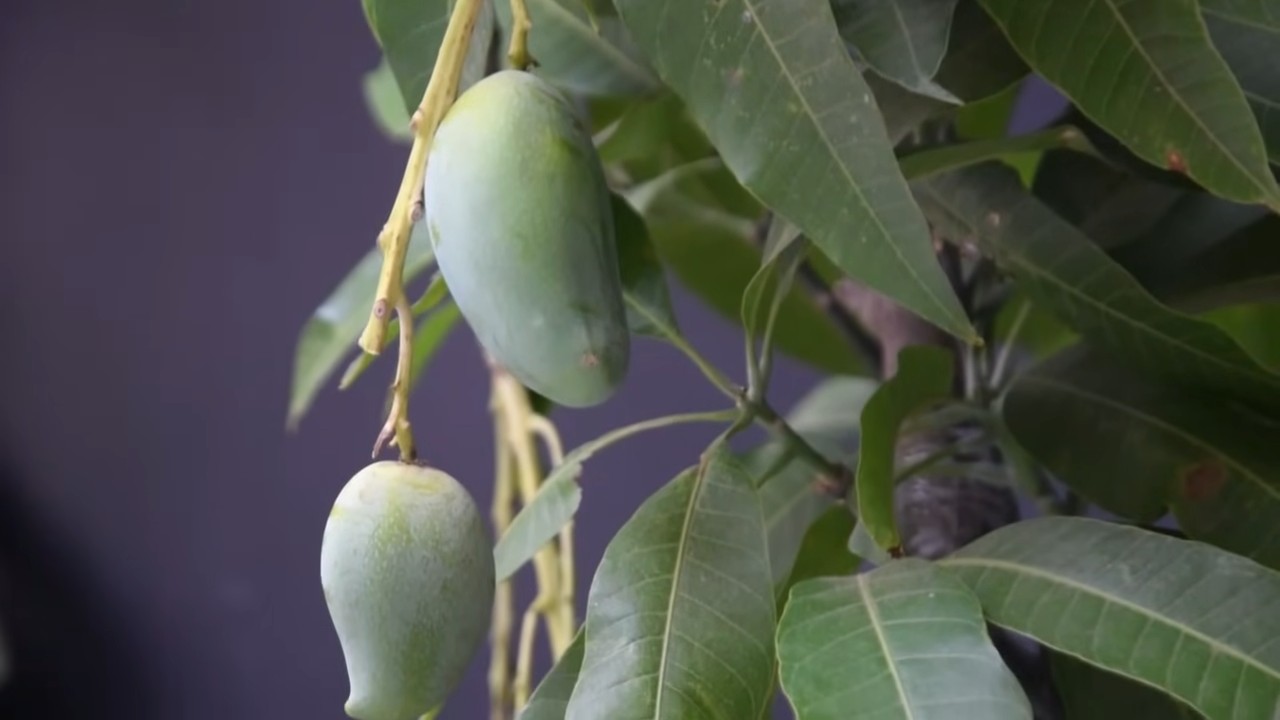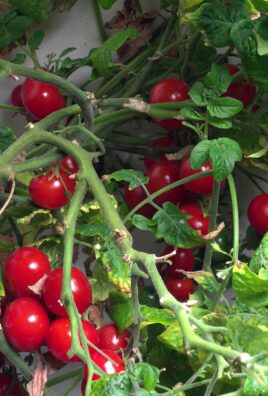Grow Mangoes Backyard Garden – sounds like a tropical dream, doesn’t it? Imagine stepping outside your back door and plucking a juicy, sun-ripened mango straight from your own tree! It’s more achievable than you might think, and this DIY guide is your passport to making that dream a reality. For centuries, mangoes have been cherished in cultures around the world, symbolizing prosperity and good fortune. From ancient India, where they were first cultivated, to the vibrant markets of Southeast Asia and beyond, mangoes have held a special place in culinary traditions and folklore.
But why should you bother trying to grow mangoes backyard garden? Well, store-bought mangoes, while delicious, often lack the intense flavor and sweetness of a tree-ripened fruit. Plus, growing your own is incredibly rewarding! You’ll not only enjoy the freshest, most flavorful mangoes imaginable, but you’ll also contribute to a greener environment and gain a deeper connection to nature. In this article, I’ll share my favorite DIY tricks and hacks to help you successfully cultivate these tropical delights, even if you don’t have a sprawling orchard. Get ready to roll up your sleeves and embark on a mango-growing adventure!

Growing Mangoes in Your Backyard: A DIY Guide
Okay, mango lovers, let’s get down to business! I’m going to walk you through the process of growing your own delicious mangoes right in your backyard. It might seem daunting, but trust me, with a little patience and the right guidance, you’ll be enjoying homegrown mangoes before you know it. This guide is designed to be super detailed, so even if you’re a complete beginner, you’ll be able to follow along.
Choosing the Right Mango Variety
First things first, you can’t just plant any mango seed and expect it to thrive. You need to consider your climate and the space you have available. Some mango varieties are better suited for certain regions than others.
* Climate Considerations: Mangoes thrive in warm, tropical, and subtropical climates. They need temperatures above 50°F (10°C) to survive and ideally need temperatures between 75°F and 85°F (24°C and 29°C) for optimal growth and fruit production. If you live in an area with occasional frosts, you’ll need to choose a cold-hardy variety or be prepared to protect your tree during the winter.
* Dwarf vs. Standard Varieties: Standard mango trees can grow quite large, reaching heights of 30-40 feet or more. Dwarf varieties, on the other hand, typically stay under 10 feet, making them ideal for smaller yards or container gardening.
* Popular Varieties: Some popular mango varieties include Tommy Atkins (reliable and widely available), Haden (sweet and flavorful), Kent (late-season harvest), and Ataulfo (small, sweet, and fiberless). Do some research to see which varieties are known to do well in your area. Local nurseries are a great resource for this!
Starting from Seed vs. Grafted Trees
You have two main options for starting your mango tree: from seed or from a grafted tree.
* Starting from Seed: This is the more economical option, but it’s also the less predictable. Mango trees grown from seed can take 5-8 years to produce fruit, and the fruit may not be true to the parent tree. This means the mangoes you get might not taste the same as the mango you got the seed from.
* Buying a Grafted Tree: Grafted trees are more expensive upfront, but they offer several advantages. They will produce fruit much sooner (typically within 2-4 years), and the fruit will be true to the variety. Grafting involves joining a scion (a cutting from a desired mango variety) onto a rootstock (a seedling mango tree). This ensures that you get the specific mango variety you want.
I highly recommend buying a grafted tree, especially if you’re eager to enjoy homegrown mangoes sooner rather than later.
Planting Your Mango Tree
Okay, let’s get our hands dirty! Here’s how to plant your mango tree:
1. Choose the Right Location: Mango trees need plenty of sunlight (at least 6-8 hours per day) and well-draining soil. Avoid planting them in areas where water tends to pool. Also, consider the mature size of the tree when choosing a location. You don’t want it to be too close to your house or power lines.
2. Prepare the Soil: Mango trees prefer slightly acidic soil (pH 6.0-7.0). Amend the soil with compost or other organic matter to improve drainage and fertility. If your soil is heavy clay, consider creating a raised bed to improve drainage.
3. Dig the Hole: Dig a hole that is twice as wide as the root ball and just as deep.
4. Remove the Tree from the Container: Gently remove the tree from its container, being careful not to damage the roots. If the roots are circling the pot, gently loosen them before planting.
5. Plant the Tree: Place the tree in the hole, making sure the top of the root ball is level with the surrounding soil. Backfill the hole with soil, gently tamping it down to remove air pockets.
6. Water Thoroughly: Water the tree thoroughly after planting. This will help settle the soil and encourage root growth.
7. Mulch: Apply a layer of mulch around the base of the tree to help retain moisture, suppress weeds, and regulate soil temperature. Keep the mulch a few inches away from the trunk to prevent rot.
Caring for Your Mango Tree
Now that your mango tree is planted, it’s time to provide it with the care it needs to thrive.
* Watering: Water your mango tree regularly, especially during the first year after planting. Water deeply and less frequently, allowing the soil to dry out slightly between waterings. Avoid overwatering, as this can lead to root rot. Mature trees are more drought-tolerant but still benefit from regular watering during dry periods.
* Fertilizing: Fertilize your mango tree 2-3 times per year with a balanced fertilizer (e.g., 10-10-10). Apply the fertilizer in early spring, early summer, and late summer. Follow the instructions on the fertilizer package for application rates. You can also use organic fertilizers like compost or manure.
* Pruning: Prune your mango tree regularly to maintain its shape, remove dead or diseased branches, and encourage fruit production. The best time to prune is after harvest. Remove any branches that are crossing or rubbing against each other. You can also prune to control the size and shape of the tree.
* Pest and Disease Control: Mango trees can be susceptible to various pests and diseases, such as aphids, scale, mango hoppers, and anthracnose. Inspect your tree regularly for signs of pests or diseases. Treat any infestations or infections promptly with appropriate insecticides or fungicides. Organic options like neem oil can be effective for controlling many pests and diseases.
Encouraging Fruit Production
Getting your mango tree to produce fruit can sometimes be a challenge. Here are some tips to encourage fruit production:
* Sunlight: Make sure your tree is getting plenty of sunlight (at least 6-8 hours per day).
* Watering: Avoid overwatering, as this can inhibit flowering.
* Fertilizing: Use a fertilizer that is high in phosphorus and potassium to promote flowering and fruit development.
* Pollination: Mangoes are primarily pollinated by insects, such as bees and flies. Encourage pollinators in your garden by planting flowering plants nearby.
* Girdling: Girdling is a technique that involves making a shallow cut around the trunk of the tree to restrict the flow of nutrients. This can sometimes stimulate flowering. However, it should be done with caution, as it can also damage the tree. I would only recommend this as a last resort and after doing thorough research.
* Smudging: In some regions, growers use smudging (burning damp organic material to create smoke) to induce flowering. The smoke contains ethylene, which can stimulate flowering.
Harvesting Your Mangoes
The moment you’ve been waiting for! Here’s how to harvest your mangoes:
1. Ripeness Indicators: Mangoes are typically ready to harvest when they change color from green to yellow, orange, or red, depending on the variety. They should also feel slightly soft to the touch.
2. Harvesting Technique: Use pruning shears or a sharp knife to cut the mango from the tree, leaving a short stem attached. Avoid pulling the mango, as this can damage the tree.
3. Handling: Handle the mangoes carefully to avoid bruising.
4. Ripening: Mangoes can be ripened at room temperature. Place them in a paper bag with a banana or apple to speed up the ripening process.
5. Storage: Ripe mangoes can be stored in the refrigerator for up to a week.
Troubleshooting Common Problems
Even with the best care, you might encounter some problems along the way. Here are some common issues and how to address them:
* Lack of Fruit: If your mango tree isn’t producing fruit, make sure it’s getting enough sunlight, water, and fertilizer. Also, consider the age of the tree. It may take several years for a mango tree to start producing fruit.
* Pest Infestations: Inspect your tree regularly for signs of pests. Treat any infestations promptly with appropriate insecticides.
* Disease Problems: Look for signs of disease, such as leaf spots or fruit rot. Treat any infections promptly with appropriate fungicides.
* Leaf Drop: Leaf drop can be caused by various factors, such as stress, overwatering, or nutrient deficiencies. Make sure your tree is getting proper care and address any underlying issues.
* Fruit Splitting: Fruit splitting can be caused by inconsistent watering or nutrient imbalances. Water your tree regularly and fertilize it with a balanced fertilizer.
Container Gardening with Mangoes
If you don’t have a lot of space, you can still grow mangoes in containers. Here’s what you need to know:
*

Conclusion
So, there you have it! Growing mangoes in your backyard garden might seem like a tropical dream reserved for warmer climates, but with a little know-how and dedication, it’s absolutely achievable. We’ve walked you through the essential steps, from selecting the right variety and preparing the soil to providing the necessary care and protection.
Why is this DIY trick a must-try? Because there’s nothing quite like the satisfaction of harvesting your own, sun-ripened mangoes, bursting with flavor and sweetness that store-bought fruit simply can’t match. Imagine biting into a juicy mango, knowing you nurtured it from a sapling to a fruit-bearing tree, right in your own backyard. Beyond the delicious reward, growing your own mangoes is an environmentally friendly choice, reducing your carbon footprint and connecting you more deeply with nature. Plus, it’s a fantastic conversation starter and a source of pride for any gardener.
Don’t be afraid to experiment with different mango varieties to find the ones that thrive best in your specific microclimate. Consider trying grafted varieties for faster fruiting and disease resistance. You can also explore different training techniques to shape your mango tree for optimal sunlight exposure and fruit production. For those in cooler climates, consider growing your mango tree in a large container that can be moved indoors during the winter months. This allows you to enjoy the benefits of homegrown mangoes even if you don’t live in a tropical paradise. Another variation is to focus on organic gardening practices, using natural fertilizers and pest control methods to ensure the health of your tree and the quality of your fruit.
We understand that growing mangoes can be challenging, and there will be times when you encounter setbacks. But don’t give up! With patience, persistence, and a little bit of research, you can overcome any obstacle and achieve success. Remember to monitor your tree regularly for signs of pests or diseases, and take action promptly to prevent them from spreading. Pruning is also essential for maintaining the shape and health of your tree, so be sure to prune it annually to remove dead or diseased branches and encourage new growth.
We wholeheartedly encourage you to give this DIY trick a try. Start small, be patient, and enjoy the journey. The rewards of growing your own mangoes are well worth the effort. And most importantly, we want to hear about your experiences! Share your successes, your challenges, and your tips with us in the comments below. Let’s create a community of mango growers who can learn from each other and inspire others to embark on this rewarding adventure. We are confident that you can successfully **grow mangoes** in your backyard garden.
Frequently Asked Questions (FAQ)
Q: What type of mango tree should I plant?
A: The best type of mango tree to plant depends on your climate and personal preferences. Grafted varieties are generally recommended because they fruit faster and are more disease-resistant than seedling trees. Some popular varieties include Tommy Atkins, Haden, Kent, Keitt, and Alphonso. Research which varieties are best suited for your specific region and consider factors like fruit size, flavor, and disease resistance. Also, consider the mature size of the tree and ensure you have enough space in your backyard garden. Dwarf varieties are available for smaller spaces.
Q: How long does it take for a mango tree to bear fruit?
A: The time it takes for a mango tree to bear fruit depends on whether it’s a seedling or a grafted tree. Seedling trees can take 5-8 years to produce fruit, while grafted trees can start bearing fruit in 3-5 years. Proper care, including adequate sunlight, water, and fertilization, can also influence the time it takes for a tree to fruit. Be patient and consistent with your care, and you’ll eventually be rewarded with delicious mangoes.
Q: What kind of soil is best for mango trees?
A: Mango trees prefer well-draining soil that is rich in organic matter. The ideal soil pH is between 6.0 and 7.5. Before planting, amend your soil with compost, manure, or other organic materials to improve drainage and fertility. Avoid heavy clay soils that retain too much water, as this can lead to root rot. If you have clay soil, consider planting your mango tree in a raised bed or container.
Q: How often should I water my mango tree?
A: Young mango trees need regular watering, especially during the first few months after planting. Water deeply and frequently, ensuring that the soil is moist but not waterlogged. As the tree matures, you can reduce the frequency of watering, but still provide adequate moisture during dry periods. During the fruiting season, it’s important to water regularly to ensure that the fruits develop properly.
Q: What are some common pests and diseases that affect mango trees?
A: Mango trees can be susceptible to various pests and diseases, including mango hoppers, fruit flies, scales, anthracnose, and powdery mildew. Regularly inspect your tree for signs of infestation or disease, and take action promptly to prevent them from spreading. Use organic pest control methods whenever possible, such as neem oil or insecticidal soap. Prune your tree regularly to improve air circulation and reduce the risk of fungal diseases.
Q: How do I protect my mango tree from frost?
A: Mango trees are sensitive to frost, so it’s important to protect them during cold weather. If you live in an area with occasional frost, consider wrapping the trunk of your tree with burlap or blankets. You can also cover the entire tree with a frost cloth. For young trees, you can use a temporary greenhouse or cold frame. If you’re growing your mango tree in a container, you can move it indoors during the winter months.
Q: How do I prune my mango tree?
A: Pruning is essential for maintaining the shape and health of your mango tree. Prune your tree annually to remove dead, diseased, or crossing branches. You can also prune to control the size and shape of the tree. The best time to prune is after the fruiting season. Use sharp, clean pruning shears to make clean cuts. Avoid pruning too heavily, as this can reduce fruit production.
Q: How do I fertilize my mango tree?
A: Mango trees benefit from regular fertilization. Use a balanced fertilizer that is specifically formulated for fruit trees. Fertilize your tree in the spring and summer, following the instructions on the fertilizer package. Avoid fertilizing during the dormant season. You can also supplement with organic fertilizers, such as compost or manure.
Q: How do I know when my mangoes are ripe?
A: Mangoes are ripe when they change color and become slightly soft to the touch. The skin color will vary depending on the variety, but generally, ripe mangoes will have a yellowish or reddish hue. You can also smell the mangoes; ripe mangoes will have a sweet, fruity aroma. Gently squeeze the mangoes; if they give slightly, they are ripe. Avoid picking mangoes that are still hard or green, as they will not ripen properly.
Q: Can I grow a mango tree from a seed?
A: Yes, you can grow a mango tree from a seed, but it’s not the recommended method. Seedling trees take longer to fruit and may not produce fruit that is true to the parent tree. Grafted trees are generally preferred because they fruit faster and are more disease-resistant. If you do decide to grow a mango tree from a seed, use a fresh seed from a ripe mango. Clean the seed thoroughly and plant it in a pot filled with well-draining soil. Keep the soil moist and warm, and be patient. It may take several weeks or months for the seed to germinate.





Leave a Comment